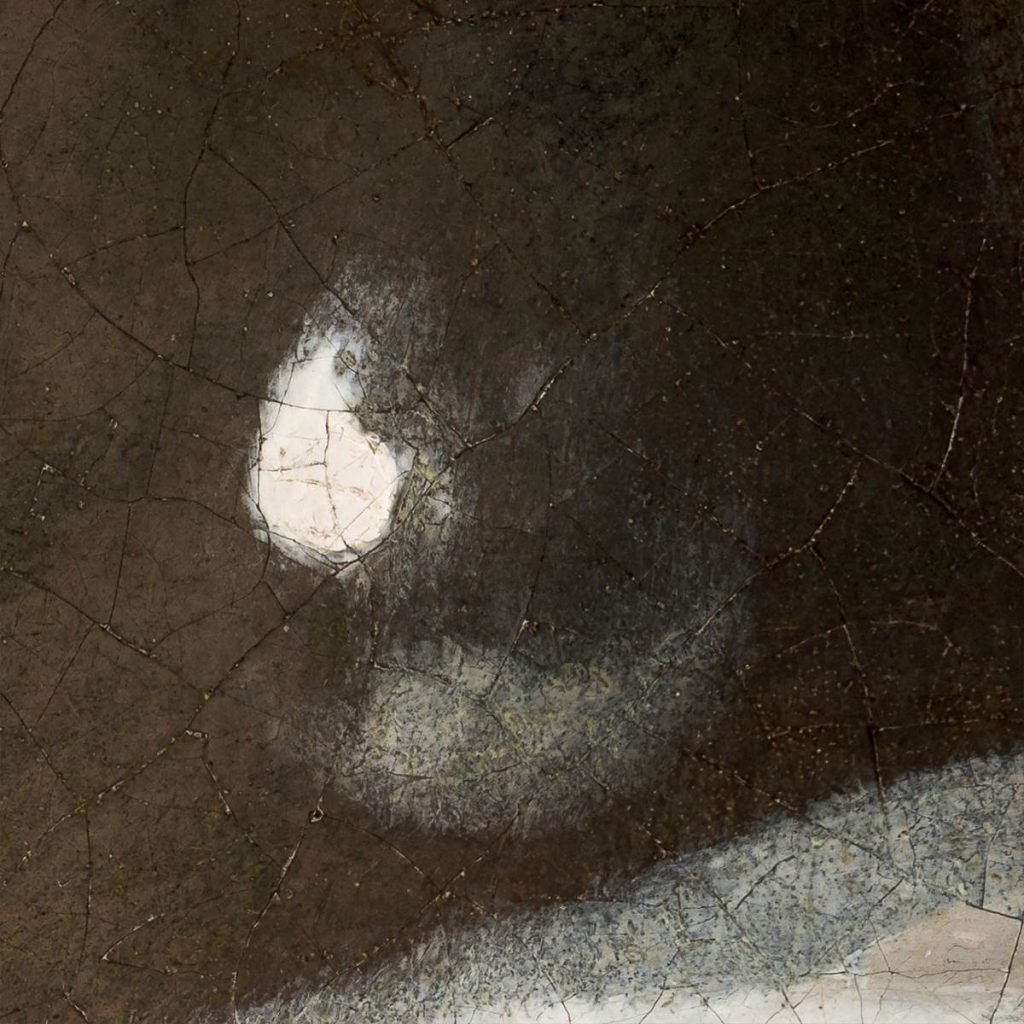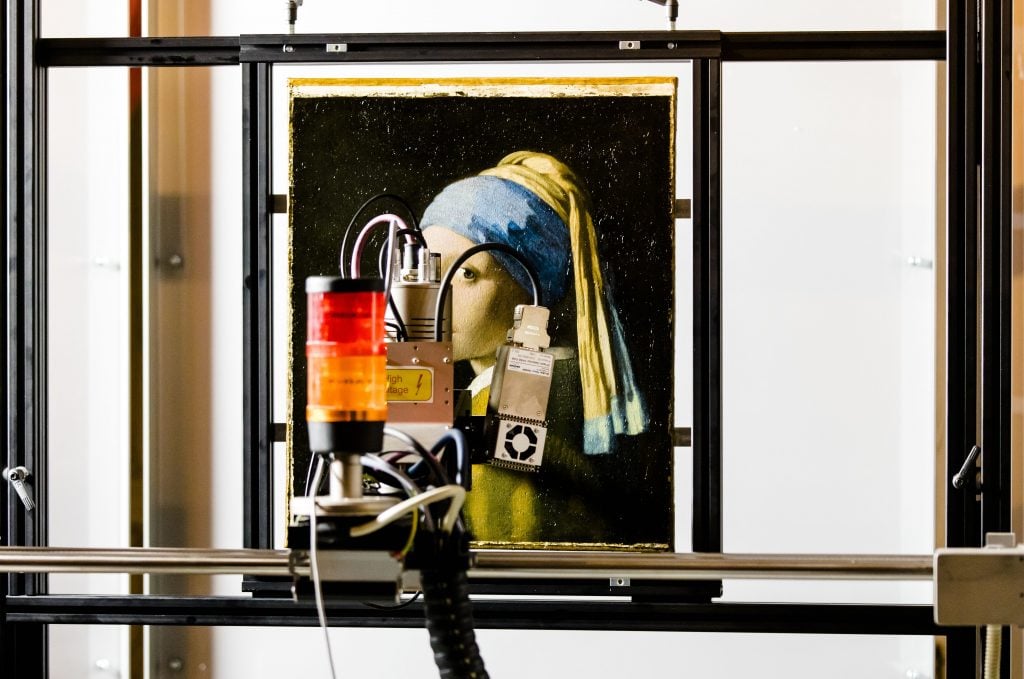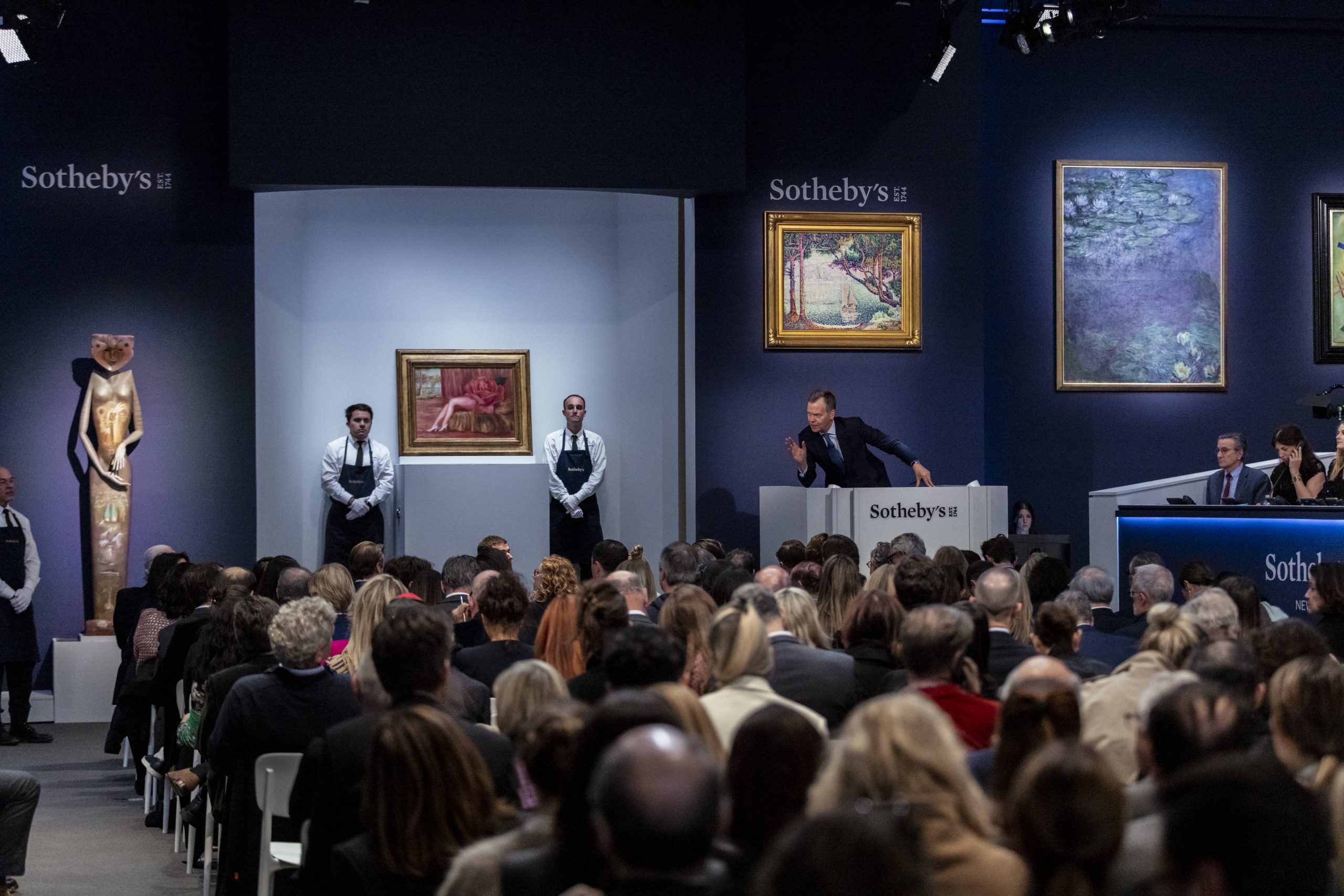Most of Johannes Vermeer’s women are indisposed. Female subjects mostly go about doing their everyday tasks in the Dutch Golden Age painter’s mere 36 known canvases—they answer correspondence, play musical instruments, pour milk. They sit or stand in interiors packed with objects that provide eye candy and context. There are two exceptions to this rule: Portrait of a Young Woman (ca. 1666-67) and what is arguably Vermeer’s best known painting, Girl With a Pearl Earring (1665).
These last two maidens aren’t framed by interiors and props that provide hints about who they are, or what their lives look like. They are silhouetted against dark backgrounds and our eyes have nowhere to rest but their features. The more you look, the more questions you might have. At face value, Girl with a Pearl Earring is a straightforward three-quarter pose likeness of a young woman. In actuality, this anonymous girl is quite mysterious.
Nicknamed the “Mona Lisa of the North,” there’s an unknowability and universality to her. It’s hard to get a solid grasp of what she actually looks like because of the way her face is tilted, and even her hair color isn’t entirely obvious. A teenaged Scarlett Johansson played her in the 2003 film based on the 1999 book by Tracy Chevalier, Girl with a Pearl Earring (once you see the resemblance, you can’t unsee it), though Kate Hudson and Kirsten Dunst also contended for that role and would have worked equally well. Vermeer’s Girl With a Pearl Earring, as much as she represents a single person, is also a bit of a chameleon. In fact, she was called a tronie, the Dutch term for a ‘type’ that is more about representing a motif or character than an actual person.
Here are three things you may not know about Vermeer’s bejeweled type, his Girl With a Pearl Earring.
The Maria Question
Vermeer used the home of his mother-in-law, Maria Thins, where he also lived together with his wife Catharina and their 11 children, as the backdrop for many of his paintings. It is assumed that the residents of that packed home in Delft also modeled for his canvases.
Maria was also the name of Vermeer’s eldest child, who may have been the young lady in Girl With a Pearl Earring as well as the maiden in The Art of Painting (1668). One scholar, Benjamin Binstock, took this theory to a more controversial conclusion in his book, Vermeer’s Family Secrets (2008), imagining that Maria also worked as her father’s assistant and produced her own paintings.
Johannes Vermeer, Girl With The Red Hat (ca. 1665–66); and Girl With a Flute (ca. 1665–75). Photo: Heritage Art/Heritage Images via Getty Images.
Binstock believes that a group of six paintings that don’t quite match Vermeer’s technical skill or use of materials, but are nevertheless based on his interiors and models, might be attributed to Maria. This includes Vermeer’s only two works on wood panel, which Binstock believes are potential self-portraits of Maria—Girl with a Red Hat (1666-67) and Girl with a Flute (1672).
Vermeer didn’t have any registered assistants, ruling out that possibility, and wouldn’t have been required to register his own children with the Delft painter’s guild. So was the girl with the pearl earring Maria, and was Maria also a painter?
There’s Luxury Beyond the Pearl
Pearls were a luxury item in Vermeer’s day—costly and procured at great risk. Many were harvested and imported from the Gulf of Mannar, an area then ruled by the Dutch and located between the southeastern tip of India and west coast of Sri Lanka. In an era before oxygen tanks and diving equipment, divers swam down to oyster beds and risked drowning or being eaten by marine animals, often for little or no pay. The Dutch East India Company then sold these pearls on the trade route, and the larger the pearl, the pricier. This meant that oversized pearl earrings such as the one this tronie is wearing would have been wildly expensive, certainly beyond the means of an artist who had to move in with his mother-in-law.

A close up of the oversized pearl in Vermeer’s famous portrait. Courtesy of the Mauritshuis.
It is assumed that the earrings in his portraits were fake—possibly imitation pearls then on the market, made by Venetian glass blowers and lacquered with a matte finish. Maybe the earring was tin. Or maybe there was no actual earring and Vermeer just fabricated one with a deft stroke or two of white paint. He was a master of painting light reflections, so the pearl could be an extension of this skill. The earring wasn’t even the focus of the painting until the mid-1990s; until then, it was usually called Girl with the Turban.
So the pearl was a knock-off, but there are actual luxury items in the painting are simply hiding in plain sight. The large swaths of blue fabric on the girl’s turban are painted in ultramarine, made from ground lapis lazuli (a pigment so rarefied that it was historically reserved for the Virgin Mary). Almost all of the ultramarine used throughout art history came from northeastern Afghanistan, obtained through a laborious process of mining, transporting the rock down mountains, and shipping it to Europe (where the pigment was extracted via a complicated process). So, in a sense, harvesting lapis lazuli was a bit like diving for pearls. Ultramarine was the priciest pigment, costlier than gold.
Vermeer also used vermilion in the girl’s lips and skin, which was probably derived from the Dactylopius coccus Costa insect species that lives on prickly pear cacti in the Andes region and Mexico. Female insects were removed from the cactus, dried, and crushed to make a scarlet colored carmine dye.
It Sold for Pennies

Johannes Vermeer’s Girl with a Pearl Earring painting inside a XRF macro-scanner during a research at Het Mauritshuis in The Hague. Photo: Bart Maat/AFP via Getty Images.
The signature in Girl With a Pearl Earring was one of Vermeer’s largest, but that didn’t improve its value when it was last time on the market, at an auction in 1881. It sold for just 2 gilders and 30 cents, as it was not recognized as a Vermeer until later.
Vermeer signed 25 of his 35 widely attributed works and placed his signatures on different parts of the canvas—sometimes on bare areas, sometimes on objects (such as a rock, a foot stool, a picture frame). Some were conspicuous, while others were small and almost hidden.
His signature in Girl With a Pearl Earring was among his largest, but it disappeared over time. Situated on the top left corner of what is now a blackened background, which was originally a green glaze with a translucent layer of blue and yellow on top. As the hue changed, it obscured the version of his signature that he used with I, V, and M letters intertwined like a monogram. Today, the monogram is barely visible to the naked eye.
Follow Artnet News on Facebook:









